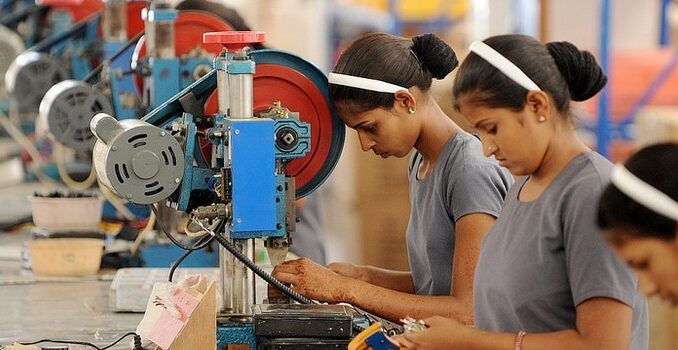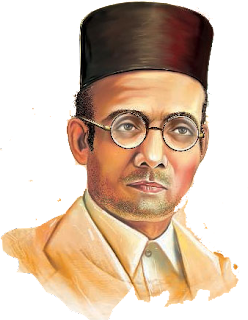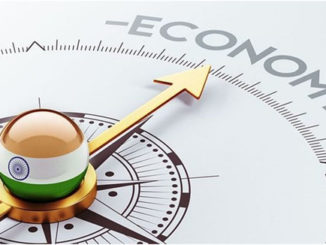“A positive diffusion of institutionalized civic consciousness is possible because, when its energies are harnessed, it improves the delivery of public goods, increases economic productivity, and allow people to live with dignity and integrity.

Today, anybody who talks about dignity and integrity is at risk of being labelled a hopeless romantic. What I hope is that we will have a time when people will admire those virtues. Rather than an existence where corruption, criminals in politics, and social violence are woven into the fabric of life, where it is rational to cheat others before they cheat you, to dig the groundwater deeper before your neighbor does, a moral restraint fosters trust and cooperation for shared economic progress.
And it is my contention in the book that the decay of social norms and public accountability prevents the delivery of public goods. I use that interplay of the lived reality with norms and accountability to assess every leader.”
Ashoka Mody wrote his new book India Is Broken: A People Betrayed, Independence To Today to challenge prevailing narratives about India’s place on the world stage and to analyze the growth and development of ‘India at 75’ through the prism of human-welfare indicators. A former World Bank and International Monetary Fund economist and now a professor at Princeton university, Mody argues the country is celebrating ‘superficial gloss’ over rosy predictions made for its future.
 A provocative new account of how India moved relentlessly from its hope-filled founding in 1947 to the dramatic economic and democratic breakdowns of today. When Indian leaders first took control of their government in 1947, they proclaimed the ideals of national unity and secular democracy. …
A provocative new account of how India moved relentlessly from its hope-filled founding in 1947 to the dramatic economic and democratic breakdowns of today. When Indian leaders first took control of their government in 1947, they proclaimed the ideals of national unity and secular democracy. …

In his new book India Is Broken: A People Betrayed, Independence To Today, Ashoka Mody, an economic historian at Princeton University’s School of Public and International Affairs, spares no one who has ever led independent India, from Jawaharlal Nehru to Prime Minister Narendra Modi.
Before arguing against Nehru’s heavy industrialization policy to build ‘temples of modern India’, he says in a chapter titled ‘Fake Socialism’ that Mahatma Gandhi’s choice of Nehru over Vallabhbhai Patel to lead the Congress party in 1946 emerged from Gandhi’s view of Nehru as “a Harrow boy, a Cambridge graduate”, who would “represent India in international affairs more effectively than Patel”.
And yet, he says, while India came “tantalizingly close” to adopting the strategy followed by Japan, already industrialized by the 1920s, the Nehru era saw the country neglect agriculture and labor-intensive small and medium-sized manufacturing that could have generated job-rich growth.
Tracing the arc of India’s current unemployment crisis, poor quality education and public healthcare to the immediate post-Independence years, India Is Broken tells the story of how the hopes of a newly independent nation in 1947 eroded over decades; and of how uneven but measurable progress on key goals, on poverty, agriculture, industry and employment was gradually lost.
A former World Bank and International Monetary Fund economist, Mody has also written EuroTragedy: A Drama in Nine Acts (2018).
On recent rosy projections of India’s economy (see here, here, here and here), Mody told Article 14 that the country is celebrating “superficial gloss”, and that once the dust settled on the post-Covid base effect, gross domestic product (GDP) growth would be closer to 4% or 3%.
GDP growth itself is a faulty measure of human welfare, Mody said, arguing that on all the metrics of liveability and human welfare including jobs, health, education, women’s participation in the labor force, the quality of life in cities, levels of pollution, the resilience of democratic institutions, India is lagging behind nations with which it competes.
Excerpts from the interview:
Iyer: I am re-reading India Is Broken right after re-reading several expert opinions that say this is India’s time on the world stage—a Morgan Stanley report says this is India’s decade, we are going to be the world’s third largest economy and stock market; Morgan Stanley’s top Asia economist has said India will offer “a compelling opportunity for investors in a world starved of growth”; a World Bank report says India will remain one of the fastest growing major economies; and the CEO of McKinsey says this is going to be India’s century. Is yours just a glass-half-empty assessment, or are all of these guys missing something?
Mody: I know this sounds very presumptuous, but I have to say that all these guys are essentially clueless about the development process. Since about the early 1990s, an Indian elite, which lives first world lives, has set the domestic narrative in the media and politics. A corresponding group in the first world has echoed that narrative.
The Indian elite does not easily relate to the subjects I deal with in the book. The members of that elite have an abstract notion that India has an employment problem. They’ve heard about or seen videos of rioting in January 2022 by young applicants for jobs with the Railways, who were frustrated because the Railways did not honor a promise of recruitment; they’ve heard about the protests against the Agniveer scheme for recruitment to the armed forces.
Iyer: But none of the glowing assessments of India that you pointed to discusses our employment crisis. While most analysts concede that we need a better education system, they rarely focus on the enormity of the task; they are satisfied that most Indians have acquired basic literacy, not recognizing that the nations we compete with have set the bar much higher.
We say we want to receive investments moving out of China. We don’t ask why China has been so successful in becoming the world’s manufacturing hub. The answer lies in a 1983 World Bank report, its first report on China. China had just become a member of the World Bank, having recently come out of its communist phase. Despite the scars inflicted by Communism, the report said, China starts from an extraordinary base of human development. Life expectancies were high because nutrition levels were good. In a pointed comparison with India, the World Bank said China was miles ahead of India in these metrics.
China had similarly made big strides in girls’ education. You know the expression ‘women hold up half the sky’? It’s a phrase that the Chinese supreme leader Mao Zedong often used, and he lived up to it. Women were active members of the Chinese Communist Party, and they had a large presence in the labor force. I’m not saying Chinese women did not suffer from gender inequities, which they continue to do; but Chinese women have made much more progress than Indian women have.
It is not surprising that the vast bulk of the movement of production out of China is going to Vietnam, where education standards match or exceed those in Western industrialized nations and women have high labor force participation rates. We keep recycling one story about Apple investing in Chennai, but if you look at the data, much of the US investment moving from China is going to Mexico.
In Asia, Vietnam, a country of a hundred million people in comparison to our 1.4 billion, now has export levels at par with ours; Vietnam has come from behind us and is poised to go ahead. Bangladesh is also on a superior trajectory, of commitment to education and greater agency of women. Recently, Cambodia is becoming another significant international production site.
Despite the hype about the Apple project, India barely appears in the data on the production moving out of China.
Since the industrial revolution nearly 350 years ago, no country has achieved success without two fundamental achievements: good education and an increase in the participation of women in the workforce. These work as a combination.
As women come into the workforce, they have fewer children, they adopt better child-rearing practices, and they devote greater resources to educating the children. The children therefore grow up to be more productive. That cycle perpetuates itself over generations.

Today, India does not have well educated kids and it has an abysmally low labor force participation rate for women. So when people say to me, oh but we’ve got this United Payments Interface, I ask if UPI is going to educate your kids? Is it going to reduce the violence against women? Is it going to prevent the sinking of Joshimath? Is it going to prevent the Hasdeo forest from being cut down? Is it going to prevent the denudation of the Aravallis? Is it going to revive all the dying rivers in this country? If not, are you telling me that none of that matters and UPI is going to be our ticket to success?
Iyer: The Indian government’s production-linked incentives have attracted some investment in pharmaceuticals and in assembly of phones, but even there, the output targets are not being met, and certainly employment levels are falling well short of the targets.
Mody: The problem with the elite commentary on India is that instead of examining the lived reality of Indians, it focuses on this animal called GDP growth, and more recently on some magical GDP targets of several trillions. This is juvenile economics. I am a former IMF economist who believes in the Marxian focus on power relations as key determinants of economic outcomes. In my IMF incarnation, I see so-called experts extrapolating from the growth rate this year to the next century, and I want to hold my head in my hand and sob uncontrollably. Because this is madness.
Even if we look at GDP growth, which as I noted is a faulty measure of human welfare, we have a problem. Recall that GDP growth had slowed to between 3% and 4% in 2019, before Covid-19. That, I would say, is the best estimate we have of India’s potential growth. All current growth rates suffer from the base effect: if a number falls from 100 to one, that’s a 99% decrease; but if it goes from one to two, that is a 100% increase. So, today’s GDP growth rates are meaningless. My best reading is that Indian GDP growth rates will fall to 4% once the dust of the base effects settles.
But we cannot allow these growth numbers to distract us from the important objectives: jobs, health, education, quality of cities, clean air and clean water, which are the right metrics of liveability, and hence in the long run are the foundation of sustainable long-term growth.
I have given you a long response to your question on the commentary by so-called experts who have fantastical visions of India’s future but have no knowledge of economic and social success achieved both historically in western nations and in our contemporary world by East Asian countries.
Human development and greater agency of women are the two fundamental ingredients why China succeeded despite having many of the pathologies we have, such as environmental degradation and over-reliance on construction as a motor of growth. China became the world’s manufacturing hub because of the foundation of strong investment in human development and women working in export-oriented factories.
In India, the demand for jobs keeps growing much faster than the supply. If all you care about is GDP growth, you can achieve that with petrochemical plants and maybe a semiconductor factory eventually. But how many jobs does such activity create?
The flip side of this highly capital-intensive growth is an economy that benefits maybe the top 5% of the people, their consumption embellished with a Louis Vuitton or a Lamborghini. The vast bulk are struggling to buy scooters and pressure cookers. And in the heat of summer, they have to wonder, can I afford a table fan?
Iyer: So is the idea of a $7 trillion economy misplaced on our wishlist or is it an empty promise?
Mody: It is both misplaced and empty.
Iyer: Your book begins with a retelling of a scene from the 1946 film Dharti Ke Lal, in which you describe an exodus from famine-struck Bengal towards Calcutta. In greater numbers, climate migrants continue to alight at railway stations in Mumbai, Delhi, Chennai, etc. Is rural India’s move to the cities, persistent over decades, a crisis or is it a solution to unequal growth?
Mody: I was struck in Dharti Ke Lal not so much by the migration to Calcutta but by the return of the migrants to their villages. That reverse trek sunk into my heart for that was the very moment I was writing about the Covid-19 reverse trek.
The reverse trek from the city to the village is heartrending. It tells me that agriculture is distressed, which makes people want to move to the city, but the cities do not have jobs and are inhospitable, which forces people to go back to the very place they want to leave.
We have made much progress since 1946, but in one fundamental sense we have failed: the lack of honorable jobs either on the farm or in the cities.
On the day after the lockdown was announced in March 2020, the factories in Surat closed down. A story of two migrants, narrated beautifully in the New York Times, was about two men who decided to stay on in Surat because going back did not hold much promise for them. Their ancestral lands had been fragmented to a degree where, if they went back, they wouldn’t have a living. However, after a few weeks out of a job in Surat, their savings ran out and they were forced to go back.
What happened during the pandemic was extreme and does not happen regularly, but it does tell you that the cities are still inhospitable because there are too few good jobs.
Additionally, we are facing a climate crisis which, as you quite rightly point out, is forcing more people out of the rural areas. Where are we going to absorb them? What are the opportunities for them? Things will become even more serious as the climate crisis causes coastal erosion, causes more frequent extreme weather events in urban areas, and reduces productivity in industry. For rural migrants to urban areas, the future is set to get harder.
Iyer: You write that the government’s promises on nutrition, health, education tend to be like Groundhog Day, a sort of a continuing winter despite promises of change, while development has tended to focus on construction of dams, riverfronts, overpasses, etc. How far back do you do trace this misplaced focus on big capital expenditures, who got it wrong first?
Mody: This process began with heavy industrialization under Jawaharlal Nehru, but as I have emphasized, Nehru was an idealist and had a vision, even if it was mistaken.
With Mrs Gandhi onwards, policy-making became a business of headline-grabbing. In her case, it was bank nationalization and Garibi Hatao. With the onset of the so-called liberalisation, the focus shifted to mining and construction.
The hard work of development, you will hear me say a million times, is human development, empowerment of women, making the judiciary fairer and responsive, cleaning the air and water.
The river Musi that runs through Hyderabad is dying because the much-celebrated pharma industry is dumping its pollutants in the Musi. Does any of the elite reporting that believes in the Indian century refer to the slow death of that river or of virtually every Indian river? This raises the question, who is development for?
In Varanasi, the river Assi, a tributary of the Ganga, gives the holy city its name along with the Varuna. The Assi has narrowed to a drain, and is extremely polluted, a fact that stays out of sight and out of mind, while the headline is that there is fancy riverfront development along the Ganga and a luxury cruise that only a handful can afford.
Everybody knows of the Sabarmati riverfront, but do people know that downstream, the Sabarmati is a highly polluted river? How many people are aware that Sabarmati riverfront is essentially a lake that’s cordoned off on both sides to collect water so that a select few people can enjoy it.
A seaplane service from the Statue of Unity (the Sardar Patel statue) to the Sabarmati riverfront is a glitzy detail embedded in the headline-grabbing pattern of development which, when extrapolated to an extreme, gives us a message that this is India’s century,
Joshimath in Uttarakhand has been sinking since 1976 when the M C Mishra committee report directed that construction activity in the Himalayas be undertaken with the utmost care because those mountains are very fragile. For years, we did exactly the opposite, building on that fragile surface without restraint or discipline. In February 2021, there was another warning that went unheeded.
Now when the town is sinking, people have suddenly woken up. But we don’t know how long this new concern will last. We also don’t know how much of the rest of the area is sinking and what we can do about it.
These examples highlight the deep erosion of social norms and public accountability. We may be in a trap. Unaccountable politicians do not impose accountability on themselves, and this becomes a Catch 22: How do you restore norms and accountability once they have eroded to such an extent?
The headline-grabbing will continue. The head of Microsoft, who was in India recently, said Indian kids are contributing to the growth of artificial intelligence. We have somehow developed a view that technology will be a substitute for long, time-honored processes of development, that the new technological tools will seamlessly take us out of the current situation into a blissful Nirvana.
Iyer: Apart from Nehru’s temples of industry, what about extractive industry? How far back do you trace the collusion between government and extractive industry, and what has been the impact of that on the people of India?
Mody: In its current form it first became manifest in the UPA period. If I had to give a precise date, I would say it was June 2005, when the Tatas signed an MoU to set up a steel plant in Bastar. Almost exactly at the same time, the vigilante group Salwa Judum was set up to protect corporate interests in the region.
Salwa Judum is a historically important marker. Its leader was a Congressman who was also the opposition leader in the Chhattisgarh assembly. The government was under the BJP. There was complete bipartisan consensus on this one thing: exploitation of natural resources is crucial for India’s model of economic development, never mind the costs of deforestation, the pollution of rivers and waterways, and damage to the livelihoods of the long-time forest dwellers.
In 2005, world trade was booming at a rate that had not been seen since the immediate post-War years. Subprime lending in the US had revved up that country’s growth. China, a recent member of the World Trade Organization, had burst on to the global scene and was importing gobs of iron and gobs of coal. Prices of coal and iron ore were rising giddily.
Suddenly, Indian and international investors became interested in these areas that were mineral-rich. These areas were also forest-rich and were occupied by a population that had suffered the worst indignities since Independence and was now being further deprived of livelihoods. And the government couched its policy approach to protesting forest-dwellers not as a matter of social justice, which it was, but as a national security issue.
We used the fig-leaf of national security to perpetuate inequities for another generation.
The entire model of development shifted at the time to a contestation for natural resources—in effect, we were privatizing the environment, including land and water. This model of development then morphed in its full-blown form into the Gujarat model of development marked by easy access to land, cheap funding, and no-fuss environmental clearances. Indian and international elites celebrated.
The examples continue to multiply. Look at the international seaport being constructed in Vizhinjam in Kerala. The fisherfolk are up in arms, as they should be for their livelihoods are at stake. To those who call this development, I ask what are you giving them in return for their displacement? Are you giving them urban jobs? Are you giving them a good education? Are you giving them good health? Will their next generation have greater opportunities?
Iyer: The most number of index entries in your book are for Indira Gandhi and Jawaharlal Nehru. Did these two leaders have the most impact on India, with outcomes both good and bad?
I don’t think that the book pays disproportionate importance to Nehru and Mrs Gandhi. Pandit Nehru gets about a quarter of the total number of pages of the book, Mrs Gandhi about the same, and the others more or less the other half of the book.
As a storyteller, I have to tell the story through the words and actions of the leaders because that is where the drama is. But as an analyst, the leaders are less important than the frame, which I call the lived reality of people. That lived reality is jobs, education, and the other public goods we discussed earlier. And the quality of the lived reality depends on social norms and public accountability.
And it is my contention in the book that the decay of social norms and public accountability prevents the delivery of public goods. I use that interplay of the lived reality with norms and accountability to assess every leader.
Iyer: You have said the early years under Dr Manmohan Singh’s prime ministership saw a ‘deceptive’ economic glow. Would you compare that situation with the present markets, the addition of all these new Indian billionaires into the world’s richest list?
Mody: I think the two are very different. The world economy grew very rapidly between approximately 2002 and 2007. For reasons we discussed a minute ago, world trade grew on a scale not seen since the immediate post-War years. All countries in the world participated in that boom, including India. But that boom was a bubble in the sense that it could not last.
In India, we also developed a homegrown finance-construction bubble.
By 2018, both these bubbles had fizzled. World trade growth had slowed down after about 2010 and, with the collapse of IL&FS in mid-2018, the finance-construction bubble deflated. That is why Indian growth slowed dramatically in 2019.
Today there is no similar bubble to prop up growth. Some individuals are thriving, but the GDP growth of 6% or thereabouts this year is purely a bounce-back from Covid-19, with the underlying growth being closer to 4% or even 3%.
Iyer: My final question is about communalism and right wing Hindutva in India, described in your book through the lens of the unrest around the time of Partition and then subsequently in 1992-1993. How do you see the current wave of Hindutva taking over India, and what do you think the impact of this is going to be, in the long term?

Hindutva lay hidden in the bloodstream of the Indian polity at least since the early 1900s. Gandhi and then Nehru, by the weight of their personalities, were able to marginalize this tendency. In Nehru’s case, a national unifying force based on a newfound freedom from colonial rule helped contain Hindutva, at least in the initial post-Independence years.
But as has been the experience of other countries, national bonds forged by freedom from colonialism are apt to wear out, to be replaced by a more primitive national identification based on local origins and roots. For India, that meant that Hindu nationalism was bound to emerge as a political force.
Even during the Nehru years, a sense of Hindu nationalism prevailed not just in non-Congress parties but in the Congress party itself. Mrs Gandhi began moving towards soft Hindutva for getting votes.
And the 1983 textile strike was a precipitating moment. The many tentacles of that strike spread to this day. In terms of economics, the loss of jobs that followed the strike meant that labor’s bargaining power fell sharply. Millowners lost interest in manufacturing and instead found it more attractive to speculate in property and enter the construction and property development businesses.
So, the de-industrialization of India began with the textile strike, which kept the bargaining power of labor low. Some workers were sucked into criminal gangs that formed around property speculation and construction, a fertile area for organized crime worldwide.
And some workers were attracted to Hindutva’s silent call. They became foot soldiers of Hindutva. That is the moment in Bombay when the Shiv Sena turned away from its anti-south Indian rhetoric to an anti-Muslim stance. And nationwide, the Vishva Hindu Parishad began organizing the first of the many yatras to propagate the Hindutva narrative. The Bombay riots in 1992-1993, which followed the demolition of the Babri Masjid, imparted further strength to Hindutva.
Once unleashed, Hindutva forces had powerful momentum, a potential that Savarkar recognized in the 1920s. The political power of Hindutva stems from the friend-enemy relationship, a theme developed by the German legal theorist Carl Schmitt a few years after Savarkar emphasized that pointing an antagonistic finger at an enemy helps sustain a politically potent group identity.
Therefore, I am not able to see a clear path out of Hindutva because it has very deep historical roots and is sustained by the friend-enemy distinction. To overcome it, we need a very deep cleansing of social norms, a process that is extraordinarily difficult.
Iyer: Is there anything heartening at all? What’s your silver lining?
We need to see more experiments such as the Kerala decentralization model. That model will help generate a new civic consciousness, which is essential to repair social norms, restore accountability, and overcome development deficits.
Essentially, a decentralized governance structure places the governed and those who govern them into close proximity with each other, and for that reason it creates an institutional framework that demands a restoration of social norms and public accountability. My hope is that such institutionalized demand for restoration of norms and accountability spreads to jurisdictions beyond Kerala and percolates up to higher levels of government.
A positive diffusion of institutionalized civic consciousness is possible because, when its energies are harnessed, it improves the delivery of public goods, increases economic productivity, and allow people to live with dignity and integrity.
Today, anybody who talks about dignity and integrity is at risk of being labelled a hopeless romantic. What I hope is that we will have a time when people will admire those virtues. Rather than an existence where corruption, criminals in politics, and social violence are woven into the fabric of life, where it is rational to cheat others before they cheat you, to dig the groundwater deeper before your neighbor does, a moral restraint fosters trust and cooperation for shared economic progress.
And it is my contention in the book that the decay of social norms and public accountability prevents the delivery of public goods. I use that interplay of the lived reality with norms and accountability to assess every leader.
That is the day I am waiting for, when change comes in a fundamental form, rather than in the superficial gloss we are now celebrating.
(Kavitha Iyer is a senior editor with Article 14 and the author of ‘Landscapes of Loss’, a book on India’s farm crisis.)





Be the first to comment